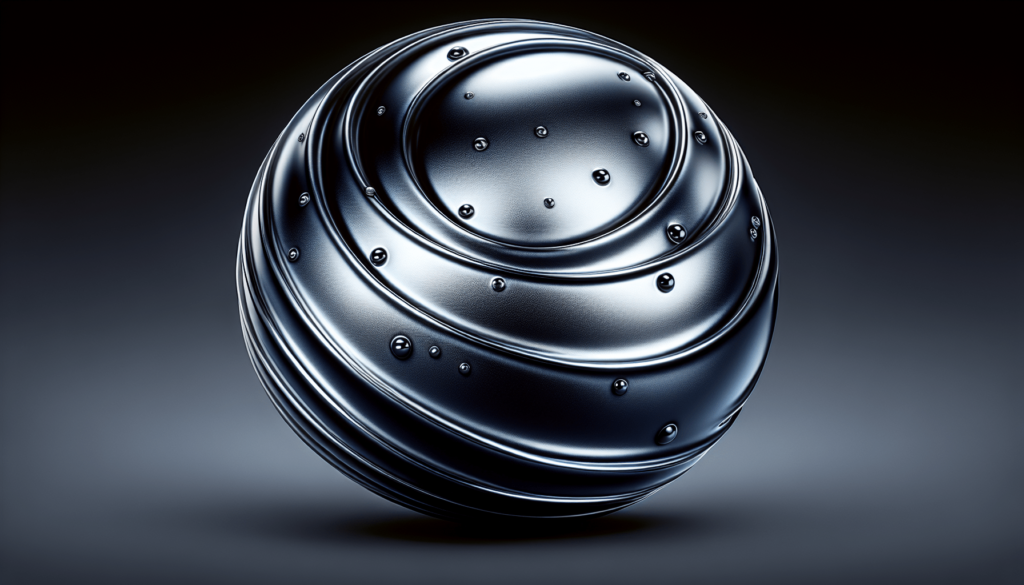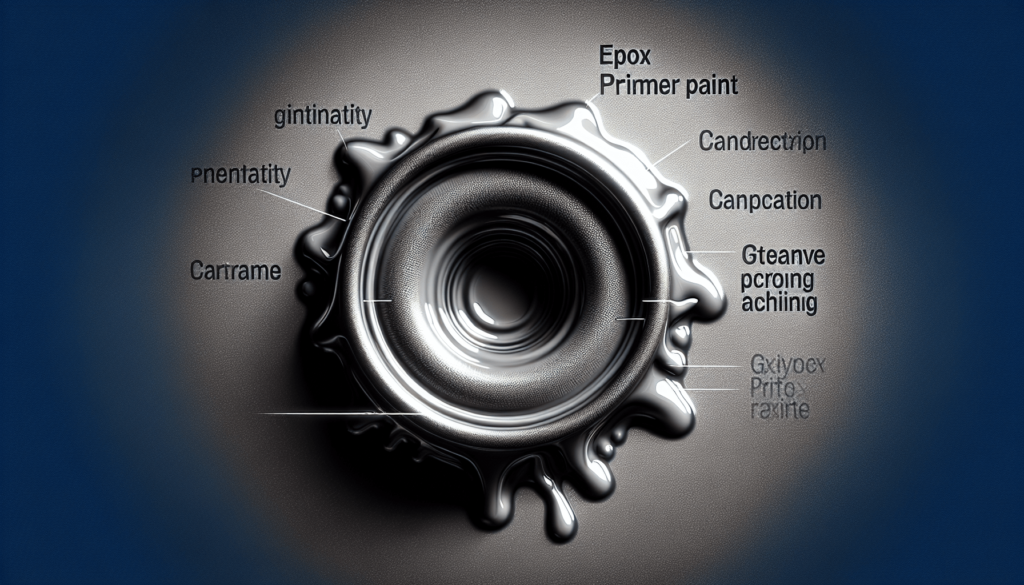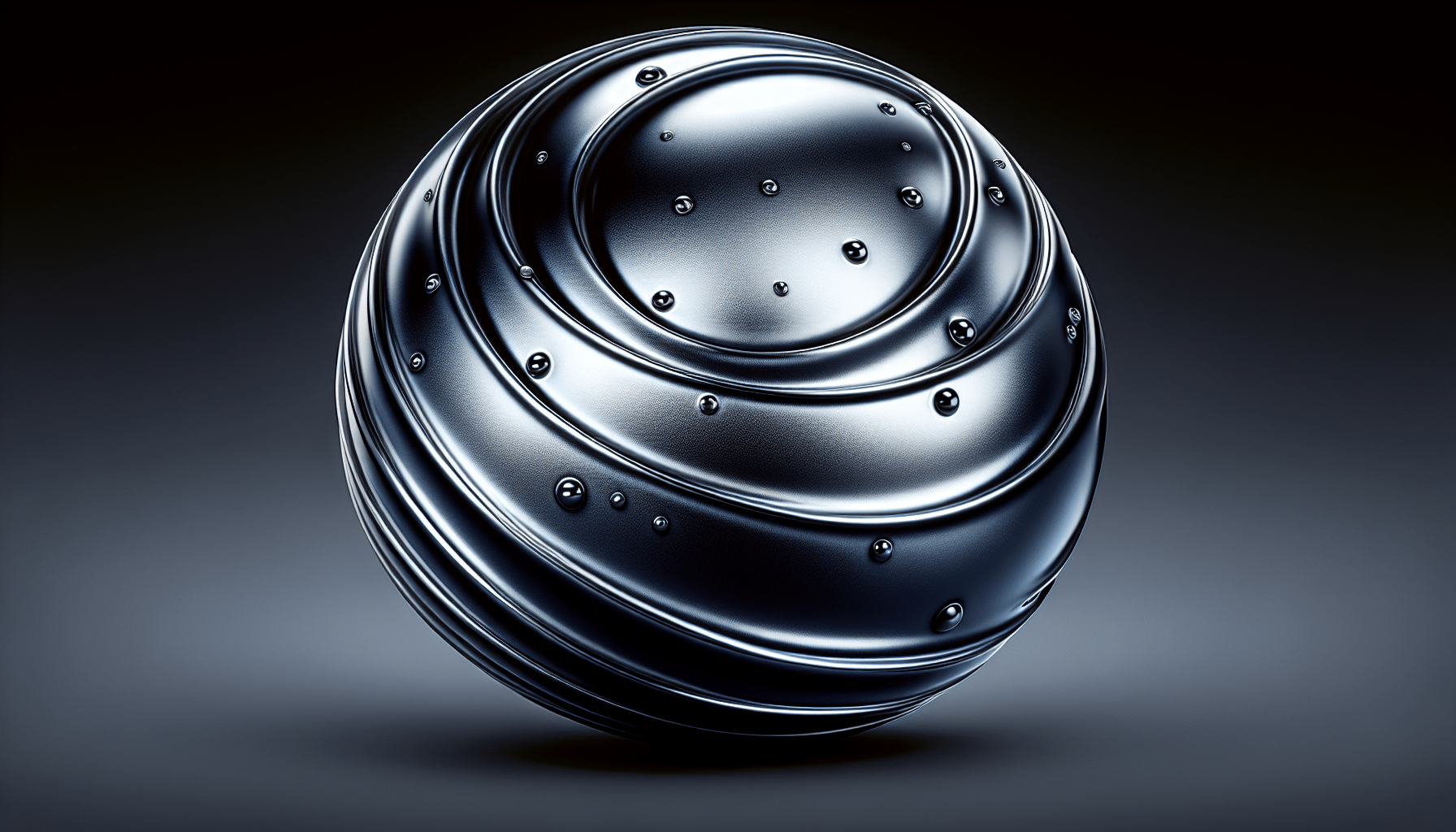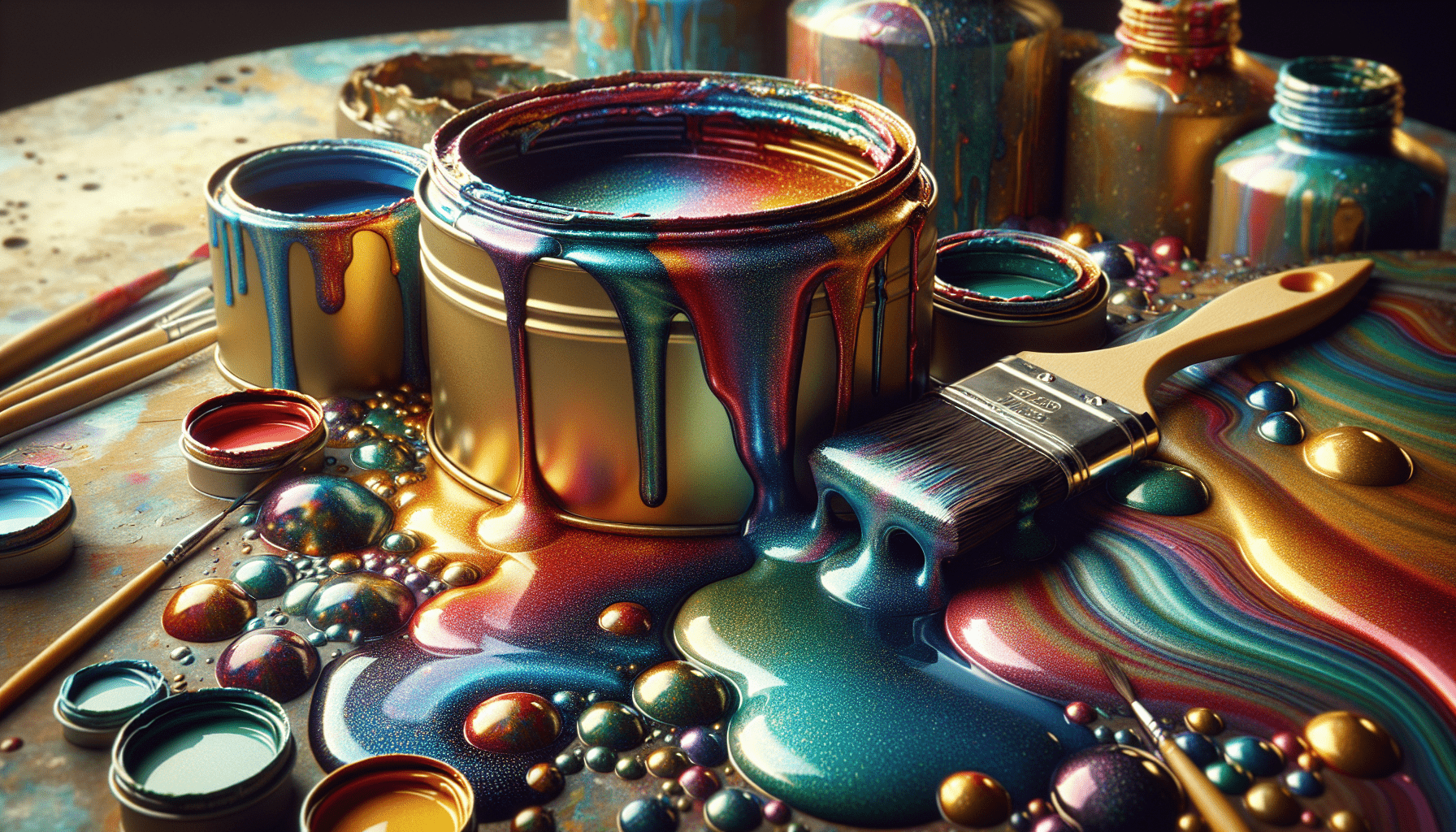epoxy primer paint is a crucial component in the world of coatings and finishes. Sought after for its exceptional adhesive properties, epoxy primer paint acts as a protective layer that enhances the durability and longevity of surfaces. By creating a strong bond between the substrate and subsequent layers of paint or coatings, this specialized primer ensures optimal adhesion, preventing peeling and flaking. Furthermore, epoxy primer paint is highly resistant to chemicals, moisture, and corrosion, making it an ideal choice for a wide range of applications, from automotive and industrial to residential and commercial settings. So, let us explore the remarkable characteristics and benefits of epoxy primer paint, and understand why it stands out as a preferred choice in the realm of protective coatings.

What is Epoxy Primer Paint
Epoxy primer paint is a type of paint that is commonly used in industrial and automotive applications. It is a versatile primer that provides excellent adhesion and durability, making it an essential component in the preparation and protection of surfaces before the application of a topcoat.
Explanation of Epoxy Primer Paint
Epoxy primer paint is a two-part coating that consists of a resin and a curing agent. When combined, these two components undergo a chemical reaction that results in a hard, durable, and corrosion-resistant finish. Epoxy primer paint is known for its excellent adhesion to various substrates, including metal, concrete, and wood.
Composition of Epoxy Primer Paint
Epoxy primer paint is composed of several key components, each playing a crucial role in its performance.
Resin
The resin is the primary component of epoxy primer paint and provides the film-forming properties of the coating. It is typically made from epoxy resins, which are polymers that contain epoxy functional groups. The epoxy resin provides excellent adhesion to different substrates, allowing the primer to bond effectively with the surface.
Curing Agent
The curing agent, also known as the hardener, is a reactive chemical compound that is mixed with the resin to initiate the curing process. It reacts with the epoxy resin to form a crosslinked network, resulting in a tough and durable coating. Different types of curing agents are available, allowing for customization of the epoxy primer paint’s properties, such as curing time and chemical resistance.
Solvent
Solvents are added to epoxy primer paint to aid in application and film formation. They help reduce the viscosity of the coating, allowing for easier spreading and leveling. Solvents also assist in the evaporation of water or other volatile components, helping the coating dry more quickly.
Additives
Additives are substances that are incorporated into epoxy primer paint to enhance specific properties or provide additional functionality. Common additives include anti-settling agents to prevent sedimentation, anti-foaming agents to reduce the formation of bubbles during application, and corrosion inhibitors to enhance the primer’s protective qualities.
Benefits of Epoxy Primer Paint
Epoxy primer paint offers several benefits that make it a preferred choice in many industries and applications.
Corrosion Resistance
One of the key benefits of epoxy primer paint is its exceptional corrosion resistance. The cured epoxy primer acts as a barrier between the substrate and the environment, preventing moisture and corrosive substances from reaching the surface. This significantly reduces the likelihood of rust or other forms of corrosion, making the coated surface more durable and long-lasting.
Excellent Adhesion
Epoxy primer paint exhibits excellent adhesion to a wide range of substrates, including metals, concrete, and wood. It forms a strong bond with the surface, creating a solid foundation for subsequent layers of paint or coatings. This ensures that the topcoat adheres properly and minimizes the risk of peeling or flaking.
Enhanced Durability
Due to its chemical composition and curing process, epoxy primer paint provides enhanced durability compared to other types of primers. It forms a tough and resilient film that can withstand harsh environmental conditions, including exposure to UV radiation, moisture, and chemicals. This longevity translates into a longer-lasting and more resilient finish.
Chemical Resistance
Epoxy primer paint offers excellent resistance to a wide range of chemicals, including acids, alkaline substances, and solvents. This chemical resistance makes it suitable for applications where the coated surface may come into contact with aggressive chemicals, such as industrial machinery, pipelines, or storage tanks. By providing a protective barrier, epoxy primer paint helps prevent the degradation of the substrate caused by chemical exposure.
Definition of Epoxy Primer Paint
To understand epoxy primer paint more comprehensively, it is essential to explore its definition and what distinguishes it from other types of primers.
Explanation of Primers
Primers are coatings that are applied to surfaces before the application of a topcoat or finish. They serve multiple purposes, including enhancing adhesion, improving the appearance of the finish, and providing additional protection to the substrate. Primers can be categorized into different types based on their chemistry and intended use.
What Makes Epoxy Primer Different
Epoxy primer stands out from other types of primers due to its unique chemical composition and properties. Unlike other primers, epoxy primer paint contains epoxy resins as the primary resin component. This type of resin offers exceptional adhesion, chemical resistance, and durability, making it ideal for demanding applications.
Function of Epoxy Primer Paint
Understanding the function of epoxy primer paint helps in appreciating its role in surface preparation and protection.
Promotes Adhesion
One of the primary functions of epoxy primer paint is to promote adhesion between the substrate and the topcoat. The strong bond formed by the primer ensures that the subsequent layers of paint or coatings adhere properly to the surface, reducing the risk of delamination or peeling.
Prevents Corrosion
Epoxy primer paint acts as a protective barrier against corrosion. By sealing the substrate and preventing moisture or corrosive substances from reaching the surface, it significantly reduces the risk of rust or other forms of corrosion. This is especially crucial for metal substrates exposed to harsh environmental conditions or chemical agents.
Seals and Protects the Substrate
Epoxy primer paint acts as a sealer, filling in any porous or irregularities on the surface. This helps create a smooth and uniform substrate, ensuring the topcoat or finish is applied evenly. Additionally, the primer protects the substrate from moisture intrusion, UV radiation, and other environmental factors, contributing to its overall longevity and durability.
Provides a Smooth Surface for Topcoat
Epoxy primer paint creates a smooth and even surface for the application of the topcoat. It helps eliminate imperfections, such as scratches or minor defects, resulting in a more visually appealing finish. The smooth surface also improves the topcoat’s coverage, reducing the amount of paint or coating required for adequate protection and appearance.
Resin
Resin is a crucial component of epoxy primer paint, as it provides the film-forming properties and adhesion to the substrate.
Explanation of Resin
Resins used in epoxy primer paint are polymers that contain epoxy functional groups. These resins undergo a chemical reaction with the curing agent, resulting in the formation of a crosslinked network that gives the primer its strength and durability. Epoxy resins have excellent adhesion properties, making them ideal for various surfaces, including metals, concrete, and wood.
Types of Resins Used in Epoxy Primer Paint
There are different types of epoxy resins used in epoxy primer paint, each with its own characteristics and performance attributes. For example, bisphenol A (BPA) epoxy resins are commonly used due to their excellent adhesion and chemical resistance. Other types include novolac epoxy resins, which offer enhanced heat resistance, and flexible epoxy resins, which provide improved flexibility and impact resistance.

Curing Agent
The curing agent, also known as the hardener, is a crucial component of epoxy primer paint that initiates the chemical reaction with the resin.
Role of Curing Agent
The curing agent is responsible for initiating the crosslinking process that turns the liquid resin into a solid, durable film. It reacts with the epoxy resin, triggering a chemical reaction that forms strong chemical bonds between the resin molecules. The curing agent also determines the curing time and overall performance characteristics of the epoxy primer, such as chemical resistance, hardness, and flexibility.
Types of Curing Agents Used in Epoxy Primer Paint
There are various types of curing agents used in epoxy primer paint, each tailored to specific requirements and applications. Examples include amine-based curing agents, which offer fast curing and excellent chemical resistance, and polyamide curing agents, which provide enhanced flexibility and impact resistance. Other types include phenolic curing agents, cycloaliphatic curing agents, and anhydride curing agents, each offering their own unique combination of properties.
Solvent
Solvents play a vital role in epoxy primer paint by aiding in application and film formation.
Importance of Solvent in Epoxy Primer Paint
Solvents help reduce the viscosity of epoxy primer paint, making it easier to apply and spread evenly on the surface. By lowering the viscosity, solvents improve the leveling properties of the paint, resulting in a smooth and uniform coating. Solvents also facilitate the evaporation of water or other volatile components, allowing the primer to dry more quickly.
Types of Solvents Used in Epoxy Primer Paint
Different types of solvents are used in epoxy primer paint, each offering specific advantages and characteristics. Common solvents include alcohols, ketones, ethers, and aromatic hydrocarbons. These solvents are carefully selected to ensure compatibility with the epoxy resin system and achieve the desired application and drying properties.
Additives
Additives are incorporated into epoxy primer paint to enhance specific properties or provide additional functionality.
Purpose of Additives in Epoxy Primer Paint
The purpose of additives in epoxy primer paint is to improve certain aspects of its performance, such as flow, leveling, adhesion, and resistance to specific environmental or chemical conditions. Additives can modify the rheological properties of the paint, prevent settling of pigments, improve wetting and leveling characteristics, or enhance the overall durability and appearance of the coating.
Common Additives Used in Epoxy Primer Paint
Some common additives used in epoxy primer paint include anti-settling agents, which help prevent the settling of pigments and other solid particles, ensuring a homogenous coating. Anti-foaming agents are added to reduce the formation of foam or bubbles during application, ensuring a smooth and defect-free finish. Corrosion inhibitors may also be included to enhance the primer’s ability to protect the substrate from corrosion.
In conclusion, epoxy primer paint is a versatile and highly effective coating that provides excellent adhesion, corrosion resistance, and durability. Its unique composition, including the resin, curing agent, solvent, and additives, contributes to its exceptional performance and protective properties. Epoxy primer paint plays a vital role in surface preparation and protection, promoting adhesion, preventing corrosion, sealing and protecting the substrate, and providing a smooth surface for the topcoat. Understanding the various components and functions of epoxy primer paint allows for informed decision-making when selecting a suitable primer for different applications and substrates.



